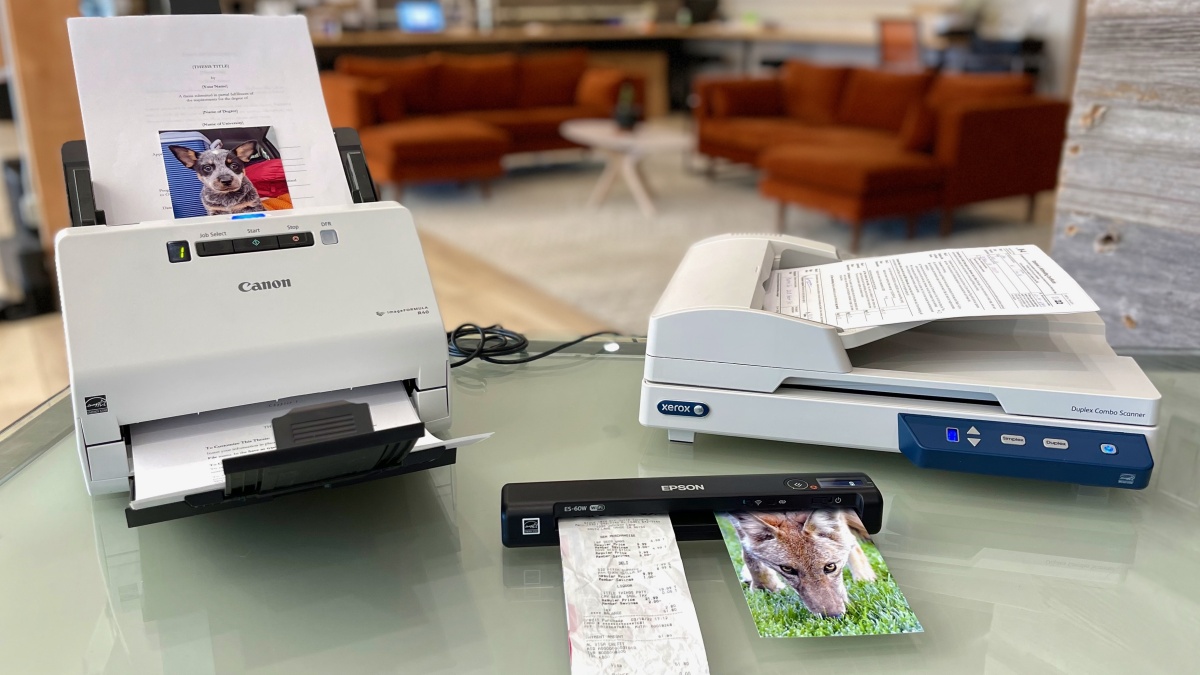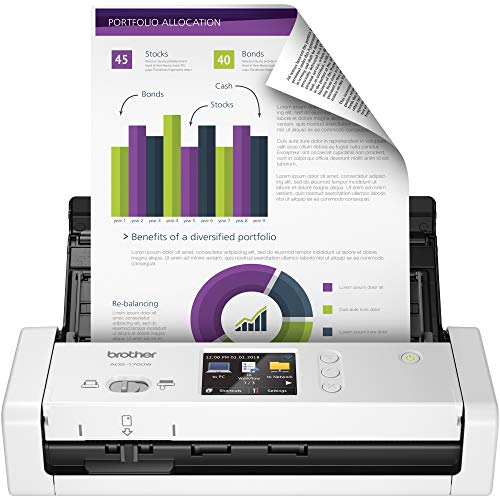Top 12 Best Scanners For Archival Preservation Of 2024
Brandon Forder Apr 18, 2024 5:17 AM
There is a scanner on the market that is perfect for scanning anything from images to papers to invoices. Here are the best ones that we tested and shopping tips to help you choose.
When looking for a scanner, it might be difficult to find one that is suitable for your regular scanning needs. The vast majority of the flatbed and sheetfed scanners available today are designed for general office use or for capturing photographs, although there is a large range of models available, each optimized for a specific application. Scanners for documents, photos, receipts, and even video are only the tip of the iceberg.
Below, we detail the best scanners we've tried across many categories and use cases. First, "Scan" the list to find the type of job you do, and then continue reading for a more in-depth look at scanner specifications and how to select the appropriate model.

Compare Products
- SCORE8.8
- BrandEpson
- Prime
Last update on 2024-04-18 / Affiliate links / Images, Product Titles, and Product Highlights from Amazon Product Advertising API
Technical Capabilities
The quality of the generated digital images is determined by a few essential aspects of a scanner after the suitable scanner type has been established (camera, flatbed, film). It is possible to compare these equipment parts by doing your own examination and starting up testing. Quality control criteria can be derived via benchmarking, which also helps you learn about the system's strengths and weaknesses. When digitizing new sorts of photos, it's important to experiment with different scanner settings to find the one that best captures the original.
Software is available that can help you set goals and analyze your progress toward those goals, giving you access to objective resources. When creating digital images, the level of quality considered acceptable is a matter of taste, which is best determined by someone with a trained eye and some photographic expertise.
Bit-Depth Capture and Output
Make that the bit depth of the image being scanned is greater than the bit depth of the digital image being used.
Because of this feature, you may rest assured that all of the pertinent data will be recorded, regardless of whether or not your scanner supports saving files at a greater bit depth. The scanner's built-in image processing operations nearly always operate on a picture at a higher bit depth than is necessary for the task at hand. Image scanning at a greater bit-depth followed by scaling down, either internally or externally, to the desired bit-depth, yields the most accurate capture of tonal values.
Signal-To-Noise Ratio (S/N)
Noise is the unwelcome change of data (bits) in the signal in a digital photograph. When a photograph is scanned, digital image noise is created due to random signal changes within the scanner. Electronic fluctuations in a scanner can impair the digital image in the same way that film grain can reduce the usefulness of a photograph by disturbing the tonal values the scanner is meant to capture. The fact that digital images are taken and exist only as electronic code is the most important fact to keep in mind when trying to decipher the S/N. Once they are on a screen, they lose their digital nature and become encoded, analog beings. Therefore, electronic differences might affect the data that constitutes the digital image.
The number of bits that accurately depict a photograph is proportional to the amount of real data present relative to the amount of electronic noise data. The S/N of a scanner needs to be tracked to make sure it doesn't get tampered with. Noise in a scanner can be tested with a target.
Resolution
Having a resolution that's high enough for the scanning work at hand is usually not a problem. If you need to scan, say, tax documents, a resolution of only 200 pixels per inch (ppi) will suffice. In most cases, a resolution of 300 pixels per inch (ppi) is all that's needed while scanning, and it's unusual to come across a scanner with a resolution of 600 ppi or less these days. For pictures, 600ppi is sufficient unless you intend to magnify a small portion of the image or print the image larger than the original.
However, better resolution is necessary for certain sorts of originals. A scanner with an optical resolution of at least 4,800ppi is necessary for scanning 35mm slides or negatives, or for scanning something small and detailed as a postage stamp.
There's also the problem of how large of a scan you can actually capture. It may seem apparent to make sure the scanner you choose can accommodate the size of the originals you need to scan, but it's easy to forget. As an example, if you occasionally need to scan legal-size pages, but most of the time just scan letter-size ones, a flatbed may not be the best option. If your flatbed scanner has an automatic document feeder (ADF), chances are it can scan legal-size papers. Scanners with larger flatbeds are also available, albeit they will require more room on your work surface.
Software
Basic scanning software is included with most scanners. Optical character recognition (OCR), text indexing, photo editing, and the ability to create searchable PDF documents are some capabilities to look for depending on what you intend to scan. There is no longer a need for a platform-specific scanner because all current scanners are fully compatible with both macOS and Windows. Many new scanners can even scan directly to your mobile device or a cloud storage service.
In order to perform their unique tasks, specialist scanners' software requires specialized hardware. Accounting software is included with many receipt scanners to help you keep track of your financial transactions. As long as the business cards aren't too intricately constructed, most scanners that accept them can import the information into a contact database.
Try to find a scanner that has TWAIN drivers so that you can scan right into your image editing software like Adobe Photoshop if that's what you're planning to do.
Load capacity
You should check the maximum number of pages that can be fed into the scanner at once when considering a flatbed or automatic feed scanner. Scanners with an automatic feed may take up to 100 pages at once, allowing you to scan huge papers or several documents without stopping to swap out sheets of paper.
Scanning speed
Information on a scanner's page or image throughput per minute should be included on its online store page or on its box in a physical store. How quickly you can digitize images and documents can be estimated in this way.
Budget
Look at what different scanning systems cost within your budget. Talking to other organizations and learning from their experiences with various pieces of technology can be quite beneficial. Investigate whether or not it would be more cost-effective to outsource your digitizing requirements to imaging providers or through cooperative ventures. Whether you're doing the digitization in-house or hiring a third party, it's important to compare the capabilities of the scanner equipment to make sure you get the most out of your investment.
Why should I scan my documents?
In both modern and historical workplaces, redundancy is an essential safety and security safeguard. Making sure you have digital copies of all of your financial documents, from invoices and receipts to client contracts, can help you avoid making any mistakes in your books and will help you stay organized. It is simple to create a searchable database out of digitized documents, allowing for rapid retrieval of past monthly sales reports, client details, or contracts, for example. And electronic copies cannot be carelessly discarded with the trash or recycled.
How much does it cost to scan documents?
It's important to think about ongoing expenses like toner, paper, electricity, and maintenance when budgeting for a standalone scanner or all-in-one printer with a scan capability. Thankfully, scanners are available at a wide range of prices, making it possible for even the tiniest enterprises to afford a suitable model. Staples and Office Depot all provide document scanning services, but at a cost of at least $0.25 per page, which can add up quickly if you're scanning a large document, you'll want to carefully consider the benefits and drawbacks of each to determine which is best for your home or office.
Is it better to scan or photograph old photos?
Some folks will scan in their old photographs by just taking a picture of them using their smartphone or digital camera. The portability of a smartphone makes it a viable alternative to a scanner, while the quality of the top camera phones(opens in new tab) allows for instant uploads to social media. But if you can purchase one of the best picture scanners, that's the best option, since the scan quality will be higher and the resulting prints or reproductions will be more suitable for display.
Does scanning a photo damage it?
Scanners are designed to be completely safe for images, therefore scanning most of them shouldn't ruin them. Flattening the images for the scanning may cause cracks or other damage if they are really old or curled, although this is quite improbable. Consult a professional digitizing or archiving agency if your collection of photographs is particularly old or valuable.
Scanners with the highest possible resolution and image quality will be ideal for long-term storage. Auto-scanning devices are our top choice because they streamline the scanning and digital storage process.
The artwork can then be printed out on a high-quality printer. Now that you've reached the end of the tutorial, we hope you've been able to locate the ideal scanners for long-term storage.
Your attention is appreciated.























